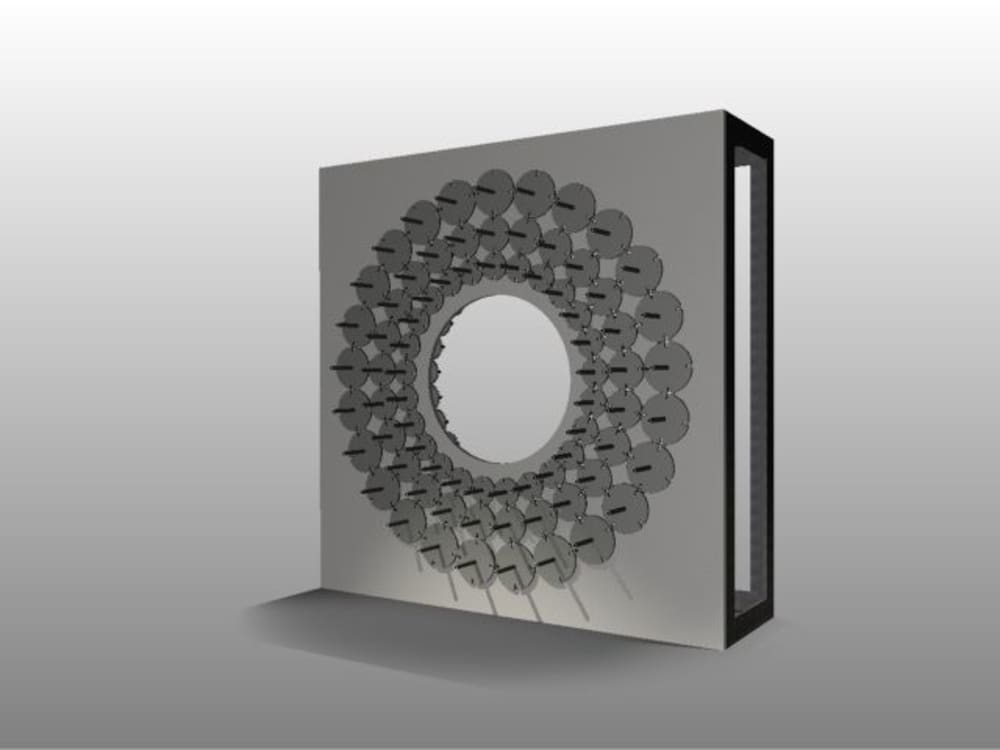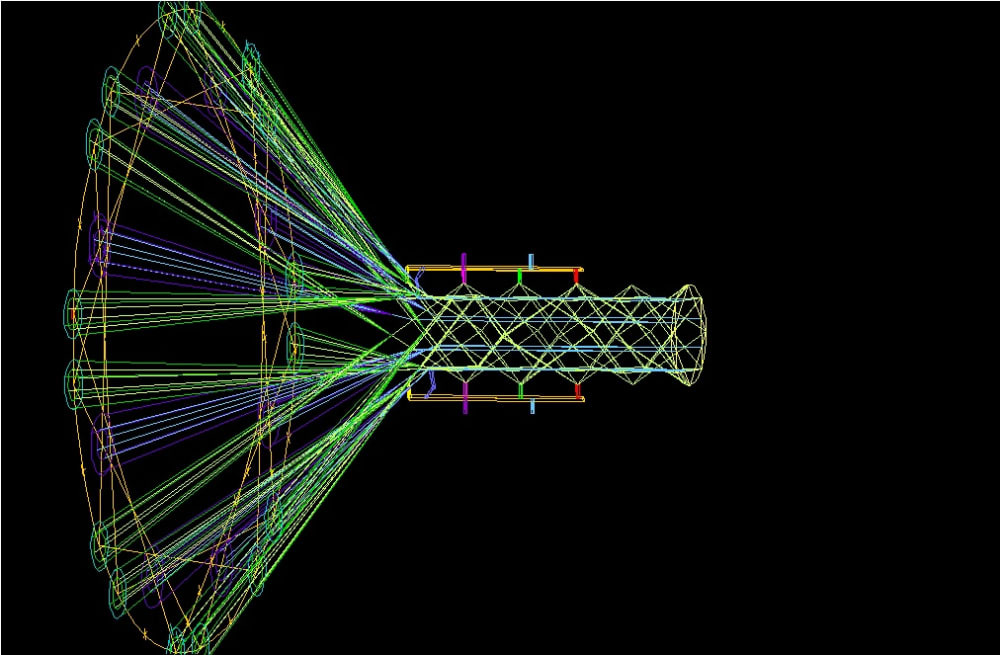The Altus manufacturing method utilizes a patented spool movement system (US #7132027) to braid and consolidate composite grid poles (see www.isotruss.com). While multiple grid pole designs are possible, they are all stronger than any conventional pole currently in the market such as wood, concrete, steel, composite, or other advanced materials. Our Altus method integrates three general fiber placement techniques to seamlessly and continuously create our stronger-than-steel grid poles. Altus Composite Grid Poles are lighter, less prone to wind damage, and last longer than conventional poles, all while maintaining the ability to compete with alternatives on a cost sensitive basis.
The beachhead market for Altus is Utility Poles and Towers (communication, meteorological, etc). The US alone sees annual utility pole sales of over $2 billion, while worldwide sales reach $20 billion annually. Communication Towers represent about $500 million in annual domestic sales with Tilt-up Guyed Towers adding $60 million. While the majority of all these markets currently use wood, concrete, or steel products; the advantages of composite products are just emerging and growing at a rapid rate. However, even above the applicable pole and tower markets, Altus’ composite grid structures are ideal for many other markets including architecture, aerospace, wind-power generation or any other market seeking rigid and light-weight structures.
Areas in the US and globally seek poles that can withstand high winds, harsh environmental conditions, and remain in place with no maintenance for many years. Altus Composite Grid Poles are superior in all these categories than any conventional pole, while also providing the benefits of lighter weight, longer service lifetime, and being a greener alternative. Altus’ Grid Poles have an open lattice-like structure that ‘feel’ 75% less wind force than a conventional pole. Altus’ composite material don’t need periodic maintenance like conventional poles and will last at least 80 years, even in humid tropical or harsh cold climates. These benefits are quickly recognized by the customer along with significantly reducing their carbon footprint.
The true innovation of Altus is the 3-D weaving/braiding/consolidating of composites to achieve a strong open-grid structure. The novel idea of continuously braiding and simultaneously consolidating the structure is achieved by the control of a complex braiding wall. Unique to the braiding wall is a set of custom built precision rack-and-pinion switches, operated by DC solenoids. Due to the banking of many solenoids close together, the power supplied to the solenoids is monitored and reduced once switch activation is complete. The current rate of switch activation limits the production rate to 360,000 feet of pole per year. In the target market, this represents ~$7.6 million per year.
The Altus manufacturing method is the key to scaling the production of composite grid poles and towers for meeting the current and growing needs of a nation and world that needs lighter, stronger, and greener structures.
Like this entry?
-
About the Entrant
- Name:Mark Jensen
- Type of entry:teamTeam members:Mark Jensen, Leader & Engineer Aaron Howcroft, Engineer
- Hardware used for this entry:NI-DAQSoftware used for this entry:AutoCAD Inventor, NI Labview 8.6
- Patent status:patented








